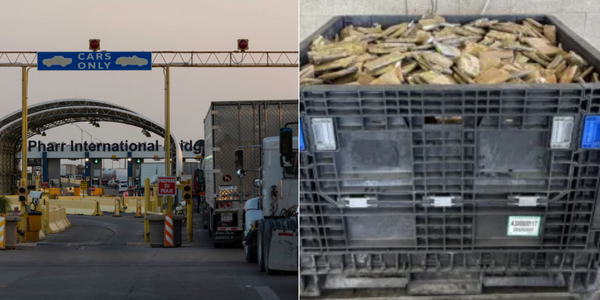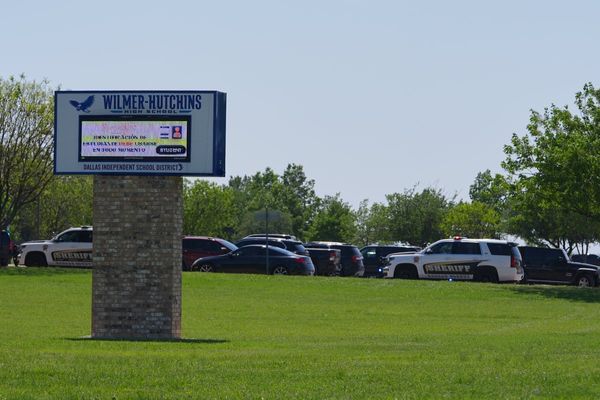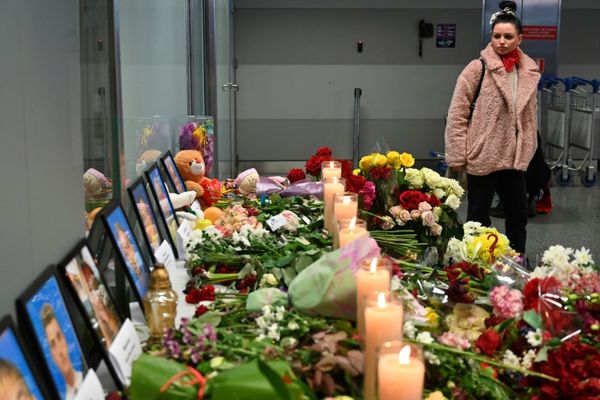
The news was sensational. It travelled quickly among Ukrainian soldiers fighting in Russia’s Kursk region. “I heard from a friend of a friend,” one officer, Vitalii Ovcharenko, recalled. “This was half an hour after it happened. My friend said: ‘We’ve got a North Korean prisoner! He’s in shock but OK.’ I said: ‘Wow.’” Ovcharenko added: “Everyone wanted a selfie. They wrapped him in a blanket and gave him tea.”
Last week’s capture of two North Korean servicemen was an extraordinary moment in Russia’s bloody war against Ukraine. The Kremlin has taken elaborate steps to conceal the presence of 12,000 elite troops sent in autumn by Pyongyang to Russia. At camps in the Far East they were given Russian equipment: uniforms, rifles and fake military documents.
The foreign soldiers even received phoney Russian names. All were “born” in the Siberian republic of Tuva, where locals have an Asian appearance and belong to a Turkic ethnic group. The North Koreans were then attached to regular Russian marine and assault corps units and sent to the frontline, thousands of kilometres to the west, around the Ukrainian-occupied Russian town of Sudzha.
This legalistic pretence fell apart last week when two separate Ukrainian groups found the soldiers on the battlefield. Both were injured. They had lain in the cold for several days. Video shows paratroopers carrying one of them across a pine forest. They were driven to Kyiv, where Ukraine’s SBU intelligence agency debriefed them, along with South Korea’s national intelligence service.
A few tentative facts emerged. One soldier – Lee Jong Nam, a 25-year-old sergeant from Pyongyang – joined the army in 2016 and was serving in a sniper reconnaissance platoon, a part of the Democratic People’s Republic of Korea (DPRK)’s fifth battalion. His first combat mission was on 8 January. He was wounded in the jaw. All the other soldiers in his seven-person group were killed.
President Volodymyr Zelenskyy shared footage of the second unidentified soldier speaking from his hospital bed. He said he had lain in the open for “three, four or five days” and said the name given on his Russian military ID was bogus. “I don’t remember it. It wasn’t mine,” he confirmed. The soldier, wounded in the leg, believed he was taking part in a training exercise.
Ovcharenko, who has been fighting in Russia since Ukraine’s August incursion, described the prisoners as “precious” – valuable assets in the struggle for international opinion. “Western agencies know North Korea is involved in Russia’s war. This is fact-checking. It’s proof,” he said. “You have a real person in front of you. You can ask questions. Pyongyang is sending Moscow infantry as well as weapons.”
According to Zelenskyy, the soldiers were raised “in an information vacuum” and knew nothing about Ukraine. Moscow was using them “solely to prolong and escalate its war”, he said. The pair’s capture comes at a precarious time for Kyiv, ahead of Donald Trump’s return to the White House and as Russian troops advance in the east of Ukraine, village by smashed village.
One of Zelenskyy’s key messages to his western allies is that Ukraine is no longer fighting Russia but a malign group of autocratic states. They have been dubbed Crink: China, Russia, Iran and North Korea. All help Russia’s war. Pyongyang sends soldiers, ballistic missiles, howitzers and shells. Tehran offers kamikaze drones. Beijing sells micro-electronic components used in weapons systems and is a political partner.
Pyongyang’s deepening involvement in Europe’s biggest conflict since 1945 has implications for the Asia Pacific region, especially for South Korea, Kyiv thinks. According to Ukraine’s HUR military intelligence organisation, the Kremlin is providing Kim Jong Un’s regime with torpedoes and technology for making drones. North Korea is keen to receive intelligence from Russian military satellites and air-to-air missiles, it says.
Meanwhile, North Korean troops are gaining valuable experience of 21st century war. Maj Gen Vadym Skybytskyi, the HUR’s deputy chief, said they were learning from their mistakes. “To begin with they advanced in large groups across snowy fields. The next lot won’t do that. They are learning new tactics and how to fight in a drone environment.” Those who survive will return home as military trainers, he said.
Speaking to the Observer, Skybytskyi said the North Koreans were keen and ideologically driven. Casualties – 300 dead, 2,700 injured, according to Seoul – have not dented morale. Soldiers have blown themselves up to avoid capture. An iPad retrieved from a dead North Korean soldier contained 67 gigabytes of propaganda. “My colleague looked at it. After two hours he said: ‘North Korea is the best country in the world,’” the general explained.
Some Ukrainian soldiers have dismissed the North Koreans as hopeless fighters sent by Russia on suicide missions. Ovcharenko, however, said some were organised and good marksmen: “The Russians hide when they see drones. The North Koreans try and shoot them down. They understand combined war, with infantry, planes and tanks.” These skills could play a role in a future peninsular war, he said.
The Kremlin has waged a relentless assault on Ukraine’s Kursk pocket, with North Korean troops frequently in the vanguard. There is fierce fighting on both flanks. One of the two prisoners was captured near the village of Orlovka, 18km north of Sudzha. North Korean units have been deployed in the village of Makhnovka, on the southern outskirts of the Ukrainian-held town.
It is unclear how long Kyiv can continue its Kursk operation. The region could form part of peace negotiations with Moscow. So far, however, Vladimir Putin has said that his war objectives are unchanged. They include the annexation of four Ukrainian regions – including major cities Russia does not control – and a veto on Ukraine’s Nato membership, something Trump appears willing to grant.
Residents in Ukrainian communities just across from Kursk worry that a second Russian invasion looms. “What will happen to our territory when the operation is over? That’s the question,” Anastasiia Kozhukhova wondered. She lives in the town of Bilopillia, where her husband Oleksandr is deputy mayor. It is located 5km from the Russian border. A fence in a ruined village marks the boundary.
In the months leading up to Ukraine’s cross-border raid last summer, Russia attacked Bilopillia with air-dropped glide bombs. They damaged the TV tower, town hall, shops and other buildings. One bomb flattened the police station opposite Kozhukhova’s flat. “I hid in the bath with my 12-year-old son, Roman, and our dog,” she recalled. The blast blew out windows and a door, which struck Oleksandr on the shoulder.
The Russians continue to target Bilopillia with missiles and drones, though less frequently than before, the deputy mayor said. He showed off a basement shelter where his mostly female colleagues worked, as well as Bilopillia’s memorial park, and the cemetery where several of his soldier friends are buried. Did he feel sympathy for North Koreans fighting nearby? “No. They came here to kill us,” he replied.
Ukrainian soldiers deployed around Sudzha showed a similar indifference. “I don’t care if they are Korean or Russian. An enemy is an enemy. They all die the same way,” Bohdan, a member of the 17th brigade’s Rubicon drone company, said. In his view, the North Koreans used old-fashioned tactics reminiscent of the second world war. “Maybe they don’t appreciate we have thermal cameras and can track them easily at night,” he remarked.
The unit’s commander Vadym Riddik said the North Koreans were taking brutal losses. “We kill them with our drones,” he said. “They move in groups of 30 or 40. The Russians are more careful and go around in twos or threes.” To prove his point, Riddik showed off videos from kamikaze drones. First one and then another fell on a large party of North Koreans as they walked on open ground. They toppled over, dead or injured.
In Riddik’s view, warfare had changed completely – something Pyongyang now understands better, albeit at a bloody cost. Expensive tanks could be knocked out by cheap unmanned aerial vehicles. Both sides were experimenting with fibre-optic drones, impervious to electronic counter-measures.
“It’s a battle of technology. War is the engine of progress,” the commander said. But, he added: “I think we are better than them.”
Luke Harding’s Invasion: Russia’s Bloody War and Ukraine’s Fight for Survival, shortlisted for the Orwell prize, is published by Guardian Faber







